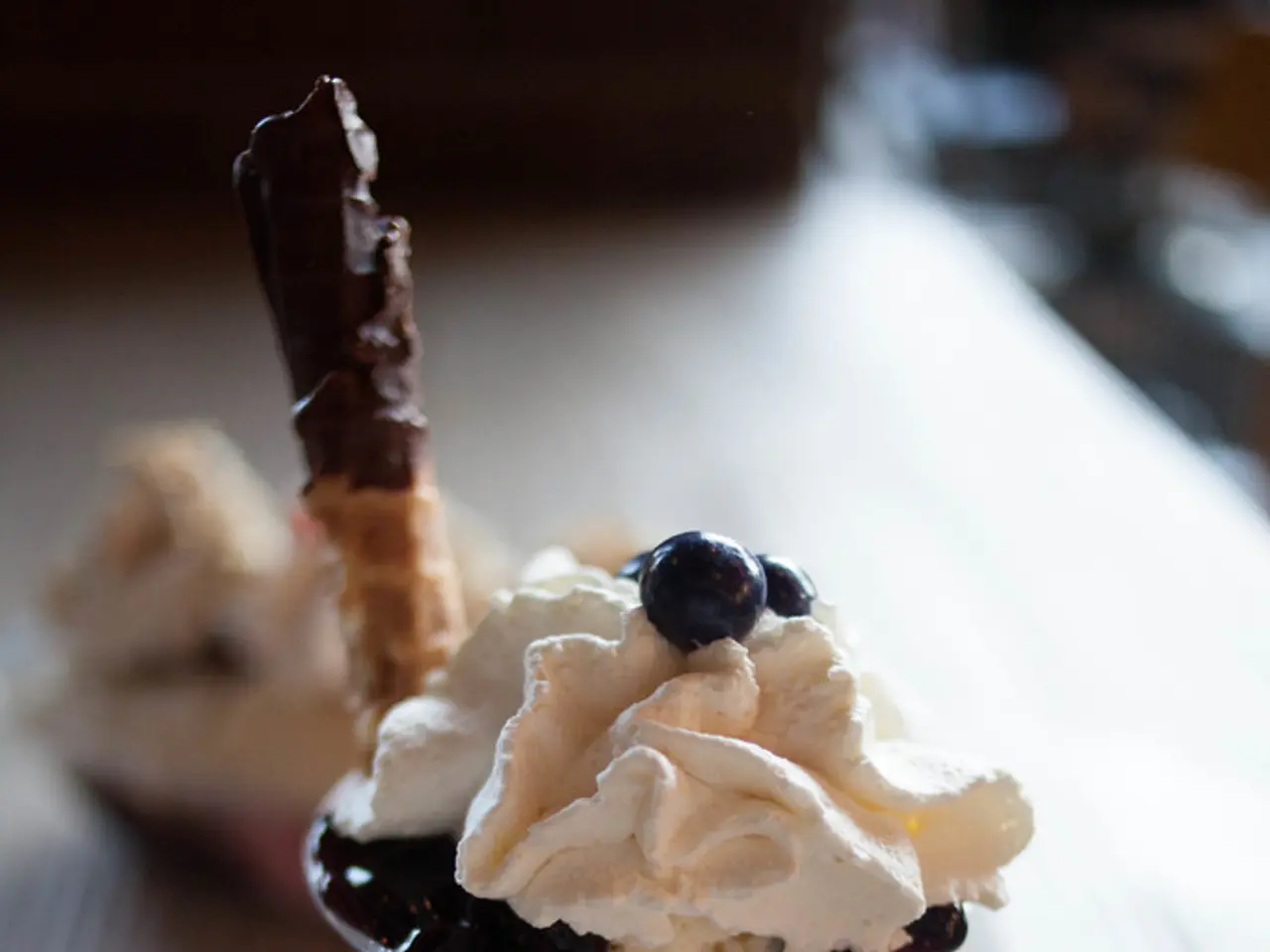The Underlying Principles Maintaining Ice Cream's Solid State
Ice cream, a beloved treat enjoyed worldwide, is more than just a frozen dessert. Its creamy texture and solid state are the result of a delicate balance of ingredients, freezing techniques, and proper storage conditions.
The science behind ice cream begins with the incorporation of air, fat, and the freezing process.
- Air Incorporation (Aeration) introduces numerous small air bubbles into the ice cream mixture during churning. These air cells lower the density and provide a light, fluffy texture. The beating action breaks large air bubbles into many smaller ones, which are stabilized by surrounding fat globules and proteins, preventing coalescence and collapse of the foam structure.
- Fat's Role is complex and essential. Fat globules partially coalesce to form a network that stabilizes air bubbles by surrounding them and preventing air cells from merging. This fat network also traps unfrozen liquid and slows melt rate, maintaining structural stability as ice cream warms. Fat crystallizes during cooling, contributing to the solidity and creaminess. Homogenization breaks fat into small droplets dispersed in the mixture, stabilized by milk proteins and emulsifiers, which further support the stable foam and creamy texture.
- Freezing and Stirring Techniques are critical for controlling ice crystal size and distribution. Rapid freezing coupled with continuous agitation keeps ice crystals small and evenly dispersed. Large ice crystals create a gritty texture, whereas small crystals yield a smooth mouthfeel. Agitation also helps to incorporate and maintain air bubbles. Proper storage at stable low temperatures prevents ice crystal growth and recrystallization, preserving creaminess.
In essence, the fat network stabilizes the air foam, the small ice crystals create smoothness, and proper freezing/stirring traps air and controls crystal growth, resulting in a solid yet creamy ice cream texture.
Using a warm ice cream scoop or running it under warm water before scooping can help to create smoother, more solid scoops. The more air incorporated, the softer the ice cream will be. Fat molecules in ice cream coat ice crystals, preventing them from clumping together and forming large ice crystals.
The technique used to scoop ice cream can impact its solidity. Higher fat content ice creams will have a creamier texture and be less prone to melting quickly. Ice cream should be stored in a freezer at a temperature of -18 degrees Celsius (0 degrees Fahrenheit) or lower to prevent it from melting. This freezing temperature is crucial in maintaining the solid state of ice cream.
Keeping ice cream in a sealed container can prevent the absorption of odors from other foods in the freezer. Odors can affect the flavor of the ice cream and alter its texture. Ice cream is made primarily from milk, cream, sugar, and flavorings. Fat is another crucial ingredient in ice cream, helping to stabilize the mixture and prevent it from freezing into a solid mass.
In summary, the science behind a perfect scoop of ice cream is a fascinating blend of aeration, fat stabilization, and controlled freezing and stirring techniques. By understanding these principles, you can appreciate the artistry that goes into creating the creamy, delightful treat we all love.
- The science of nutrition plays a role in ice cream's health-and-wellness implications, as its high fat and sugar content can contribute to dietary concerns.
- To promote a health-and-wellness lifestyle, opt for ice cream brands that use natural ingredients and minimize artificial additives in their food-and-drink products.
- For those who enjoy ice cream as a treat, pairing it with fruit or vitamin-rich toppings can help to balance its nutritional profile and make it a part of a balanced diet.







